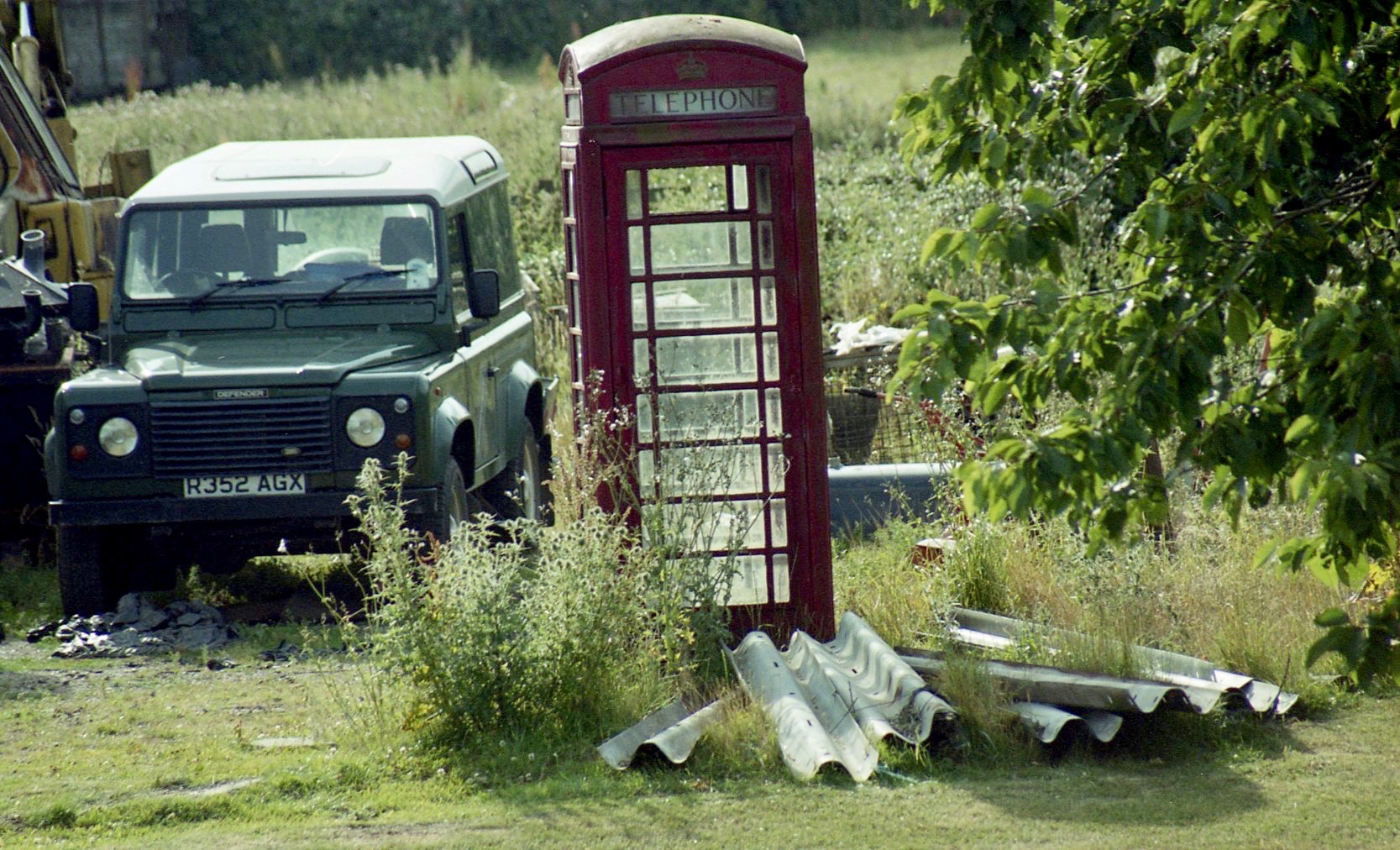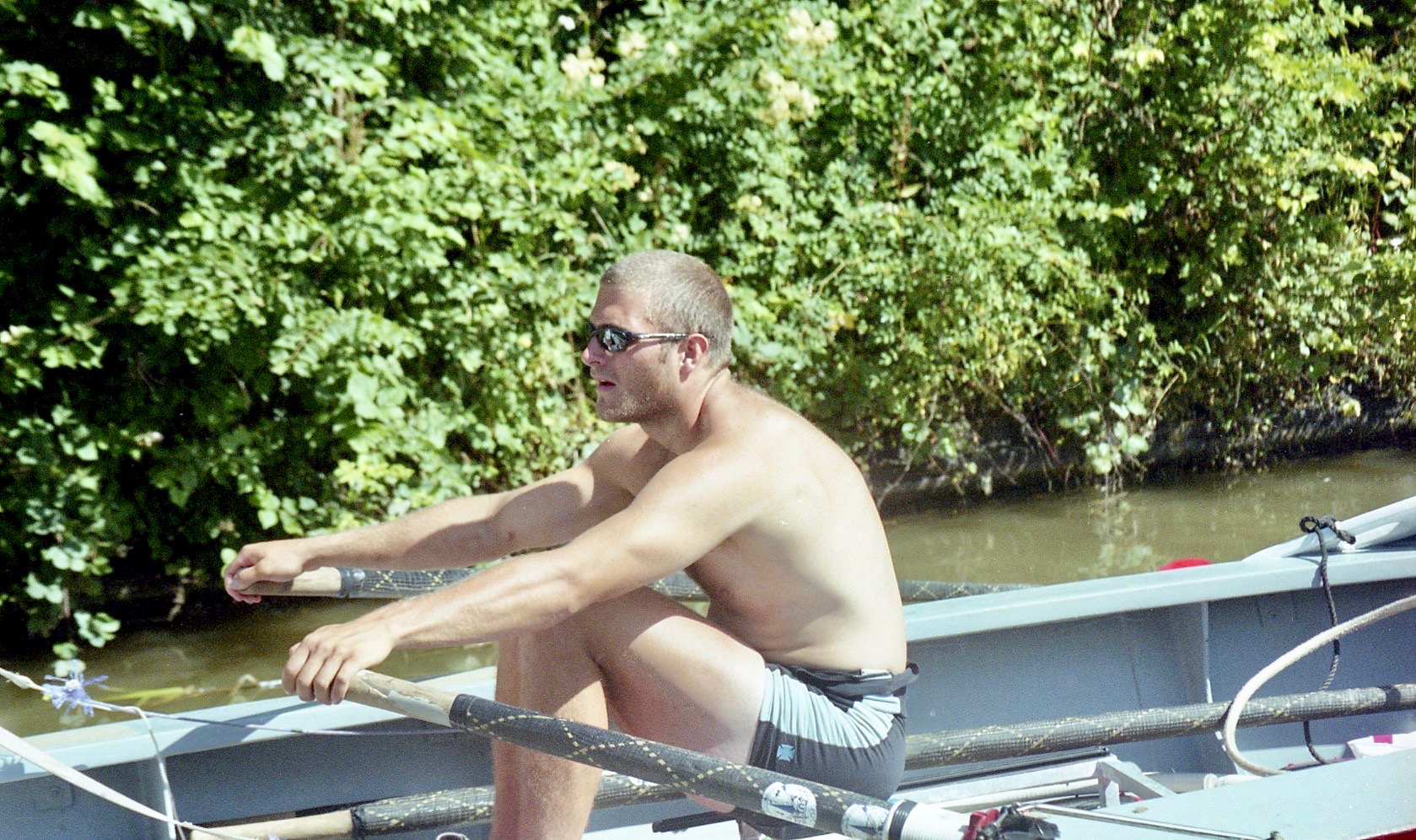CLICK ON ANY IMAGE IN A GROUP TO ACCESS ENLARGED GALLERIES
Anyone who had imagined that the long-running saga of the British Gas electricity bill had reached its conclusion will have been under the same misapprehension as me. Here is a brief recap. I had paid the delayed bill over the phone on 11th January. On 21st I received the next bill, including the paid amount. I was told the payment hadn’t gone through because of a problem in their system. I paid it again. Today I received a reminder for the first amount. I telephoned once more; said I knew my views would make no difference, but that they would make me feel better; then gave my views.
Afterwards I continued my scanning of the colour negatives from Henley to Newark trip of July 2003.
Grasses and wild flowers still covered the footpaths, and I was treated to what I believe was my first sight of a damselfly.
Sheep and fields of grass occupied the landscape on the opposite bank of the Oxford Canal,

which seemed an unlikely resting place for an iconic red telephone box.
I caught up with Pacific Pete at the Braunston Turn Bridges. theoxfordcanal.co.uk website informs me that this section of the waterway, which shares its route with the Grand Union Canal Main Line as far as Napton Junction, is ‘one of the few places on the entire stretch of the Oxford Canal where there is narrow boat access to another river or canal. It is worth noting from the point of view of use by cyclists and walkers that the towpath really deteriorates very soon after Braunston Turn Bridges. In fact this section of the canal has hardly any towpath in some places and is a real mess suffering from collapse, potholes, mud, nettles and brambles. It can be all but impassable in places if there has been any sort of recent wet weather.’
Unfortunately, I didn’t know this.
According to Wikipedia, ‘The Horseley Ironworks (sometimes spelled Horsley and Iron Works) was a major ironworks in the Tipton area in the county of Staffordshire, now the West Midlands, England.
Founded by Aaron Manby,[1] it is most famous for constructing the first iron steamer, The Aaron Manby, in 1821.[2][3] The boat was assembled at Rotherhithe. She was only the first of a number of steamboats built on the “knock-down” principle. The ironworks have also been responsible for the manufacture of numerous canal and railway bridges of the 19th century.
The ironworks were built near the Toll End Communication Canal[4] on the Horseley estate, which had been sold by their owner at the turn of the 19th century[5] due to demand from engineers wishing to profit on the construction of the BCN Main Line through the estate. The date when the ironworks were constructed is unknown but is believed to have been by 1815.[5] Industry in the area prospered and the location retained the name of the Horseley estate as shown in an 1822 survey of the area.[6]
With the increasing popularity of canals, the ironworks quickly became popular for manufacturing canal bridges, mainly in the local vicinity.[7]Canal bridges made by the ironworks include the Engine Arm Aqueduct (1825), two roving bridges at Smethwick Junction (1828),[8][9] Galton Bridge (1829), and Braunston Towpath Bridges (1830).[10][11] By the end of the canal construction era, Horseley Ironworks had emerged as one of the most prolific manufacturers of canal bridges in the West Midlands region,[5] especially in Birmingham.[12] This was a result of their signature bridge design which had become popular amongst canal constructors. The design has been replicated more recently, for example in Birmingham during the regeneration of Gas Street Basin where Worcester Bar is linked to Gas Street.[13]
Horseley Ironworks were also responsible for manufacturing in the railway industry. Railway bridges constructed included that of the viaduct for the London and Birmingham to Holyhead railway at Shifnal, Shropshire which was cast in 1848.[14] As well as manufacturing bridges, they also produced locomotives.[15]
The company also manufactued construction steelwork for the pier of Ryde, the Palace Theatre in London, Rugby railway station, a seaplane hangar in Las Palmas and the Dome of Discovery at the 1951 Festival of Britain.[16]
People who have worked for the iron foundry include Charles Manby, the son of Aaron Manby, James Thomson,[17] William Johnson[18]and Richard Roberts.[19]
The firm moved in 1865 to a site on the now defunct Dixon’s Branch, off the BCN New Main Line (Island Line), near the South Staffordshire Railway line. The factory survived under a succession of owners until 1991, when it was closed down and subsequently redeveloped as a housing estate.[4]‘
I managed to keep up with Sam and James in the boat whilst, having passed under the elegant bridge from the time of Queen Victoria’s predecessor, King William IV, they negotiated their way through a narrowboat-congested area to the next flight of locks. As can be seen, there was barely room for the lengthy ocean-going oars.

Eventually the rower was once more under way.
After this, I had to find my way up and down various hilly areas, where I was surprised in the darkness by the only badger I have ever seen alive. I was amazed at how fast it could run. It was fortunate that the creature took off in the opposite direction, because running anywhere, by that time, was quite beyond me.
This evening we dined on Mr Pink’s perky cod, parsley flavoured fish cakes and crisp chips plated up with pickled Freshona gherkins and Garner’s onions. We both drank Pedro Jimenez Coquimbo 2016.